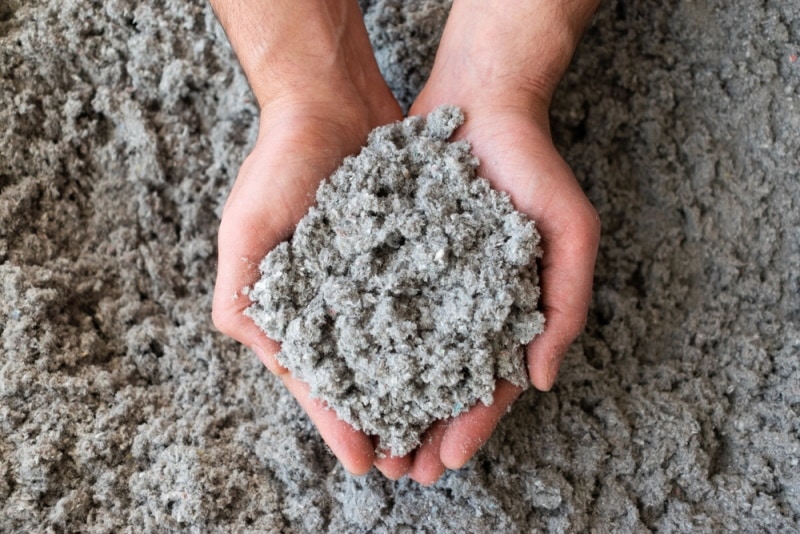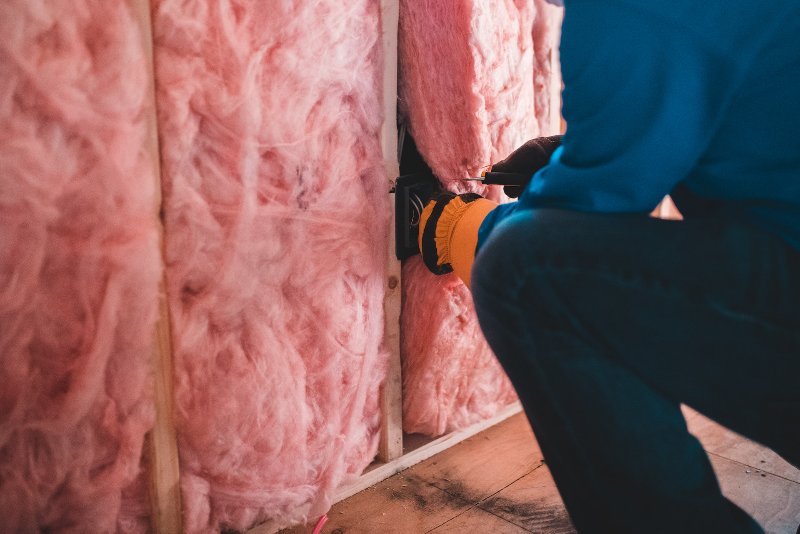What Is Insulation Made Of? 5 Common Materials
-
Pete Ortiz
- Last updated:

Insulation is material that is added to properties to prevent heat flow. It is used to stop cold air from getting in and warm air from getting out. There is a vast range of materials used to create insulation, with some of the most common being cellulose, fiberglass, and mineral wool. Typically, these are made using recycled materials, whereas two other popular types of insulation materials (polyurethane foam and polystyrene) are not.
There are pros and cons to each type of insulation and, ultimately, the choice of which is best will come down to the level of thermal protection required and where the material will be used. Read on for more details on insulation materials so that you can choose the one that best fits your needs and will provide you with the best insulation results.
What is R-Value in Insulation?

When looking at insulation materials, they are given R-value ratings. The R-value is the temperature difference between a warm surface and the cold surface, so this is essentially the amount of temperature that the insulation can give to a property.
Generally, the higher the R-value of an insulating material, the better it is, although some properties may not need the highest R-value available.
Other Factors
As well as the R-value, it is worth looking at the following factors:
- Cost – The cost of insulation is not only determined by the actual price of the material itself but also by the installation technique and the materials required. When getting quotes for different materials, consider whether any extra insulative properties are worth the extra money.
- Ease of Application – Some materials are more difficult to install than others and this not only affects the price you ultimately pay for the installation but also how easily you will be able to find experienced installers to do the work.
- Availability – The insulation materials below are mostly easy to find, although polystyrene and polyurethane foam are a little more difficult to source. There are other materials, some with unique fire retardancy and waterproofing materials, that are used so rarely that they are very difficult to locate, and you may need to pay extra just to find the materials.
- Fire Retardancy – Although the primary focus of insulation is to prevent the loss of heat from a property, insulation can serve additional purposes. Some materials are waterproof, while others are fire-retardant. Fire retardant insulation may not fully prevent fires, but it can limit the damage and may slow the spread of fire.
- Environmental Properties – The most popular insulation materials are usually made from recycled materials and their installation is not considered bad for the environment. But there are some, including styrofoam or polystyrene blocks, that have a reputation for being bad for the environment. Even if this doesn’t matter to you, consider the impact if you come to sell your house in the future. Some buyers may be put off at the thought of needing to replace insulation for something more environmentally friendly.
The 5 Common Insulation Materials
Five of the most common insulation materials used in homes and other premises include:
1. Cellulose
Cellulose is commonly made from recycled paper or cardboard. The material is shredded, compacted, and then installed, which gives it an R rating between 3.1 and 3.7 while also giving it excellent fire-retardant properties due to the lack of oxygen within the tightly packed material.
The material itself is also relatively cheap, although it can be hard to find professionals who are experienced working with the material, and the fine dust that it gives off can lead to allergic reactions.
2. Fiberglass
Fiberglass is made by combining glass and silicon. It uses glass powder and small pieces of glass to give an R rating of 2.9 to 3.8 per inch. It is inexpensive, but whoever is installing the material must take precautions to prevent damage from microscopic glass fibers. Eyewear, goggles, and other protective clothing need to be worn during the installation process.
3. Mineral Wool

Mineral wool can be made from recycled glass, basalt, or steel slag. Most are made from the slag that is created as a by-product at steel mills. Whatever material it is made from, the wool has an R rating between 2.8 and 3.5.
While it is not combustible itself, the material does not do a good job of preventing fire damage so it may be combined with other fire retardant materials in instances where there is a danger of fire caused by extreme levels of heat.
4. Polyurethane Foam
Polyurethane foam is applied by spraying the foam into the desired areas. Non-CFC polyurethane foam is an excellent insulator, with an R-value of approximately 6.3 per inch, while low-density foam, which can be sprayed into empty areas that have no current insulation, has an R rating of 3.6 per inch.
The foam is fire retardant, so this type of insulation is a good choice for areas that have a high risk of fire, but it is expensive and not that common, which means it can be difficult to find insulation companies that offer polyurethane foam.
5. Polystyrene
Polystyrene is another less common insulation material and some forms have faced scrutiny recently because of the fire-retardant coating that they use. Expanded polystyrene is the cheaper of the two and has an R-rating of 4. Extruded polystyrene has an R-value of 5.5 but is the more expensive.
Both forms can be cut into blocks and have a smooth surface, but neither of them is naturally fire-resistant, which means that they need to be treated with a fire-retardant coating. Traditionally, manufacturers have used Hexabromocyclododecane or HBCD, but there are questions regarding the health and environmental risks associated with this material.
Conclusion
There are many different insulation materials available, including some that are used for very specific purposes or in specific circumstances and conditions. Some of the most common materials are cellulose, fiberglass, and mineral wool, while polyurethane foam and polystyrene are not quite as popular but still readily available. Consider the R-value as well as factors like cost and ease of installation to ensure that you get a suitable material for your project.
Featured Image Credit: gokcentunc, Shutterstock
Contents



